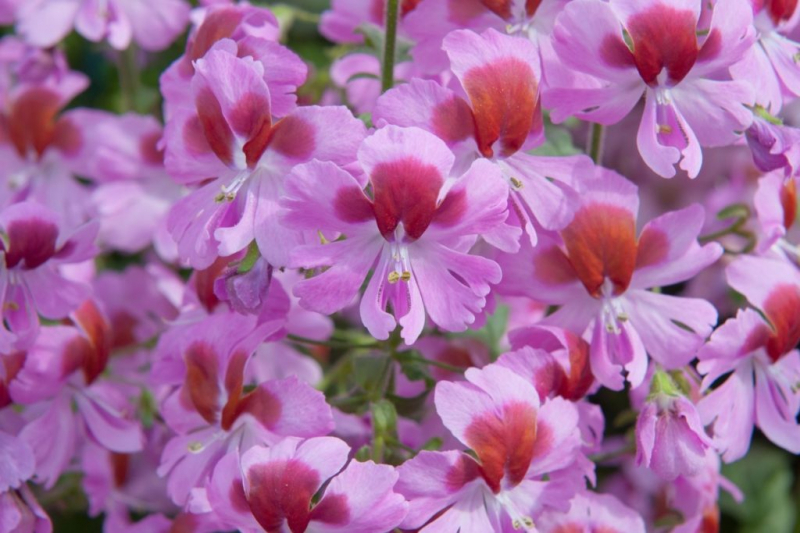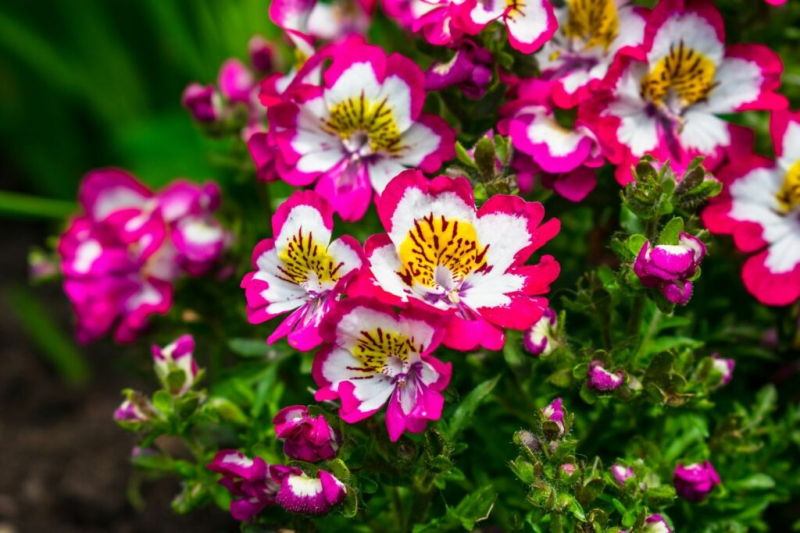Farmer Orchids: Plants, Care And Varieties
When is the flowering time of farm orchids? Do farmer orchids differ in their care from normal orchids? We have the answer and introduce you to the most beautiful varieties. From a botanical point of view, farmer orchids and orchids are not related to one another. Visually, the ornate symmetrical flowers of the farmer orchids can certainly keep up with the flowers of their namesake sisters.
Farmer orchids: flowering time, characteristics, and origin
Table of Contents
Farmer orchids ( Schizanthus x wisetonensis ) belong to the genus of slit flowers ( Schizanthus ) in the nightshade family ( Solanaceae ). They were bred as a hybrid in Europe around 1900 by crossing two other species of split flower, Schizanthus grahamii and Schizanthus pinnatus. The wild ancestors of the farmer orchids originally come from Chile. Farmer orchids grow up to 40 cm high and have a slightly pyramidal habit.
From May to September, numerous small flowers form, which, depending on the variety, bloom in intense pink, red, white, or multi-colored, e.g. purple and white. The multicolored varieties have a yellow-black to the yellow-red-colored center of the flower. The five petals are arranged symmetrically so that two mirror-like halves are created. The leaves are pinnate and have a roughly toothed leaf margin. Their intense green harmonizes very well with the colorful flowers.
Are farmer orchids friendly to bees?
The pretty flowers of the farmer orchids are not only a feast for the eyes, but they are also an attractive source of food for bees and other insects.
Are farmer orchids hardy?
Because of their origin, farmer orchids are adapted to the cold and tolerate temperatures down to -7 ° C, as long as a period of frost does not last too long. But even if they are partially hardy under the local climatic conditions and can survive the winter, farmer orchids do not develop any new flowers in the following year. These are annual ornamental plants that have to be re-sown every year.
Farmer orchids: These are the most beautiful varieties
In the shops, the seeds of the farmer’s orchids are usually offered as a colorful mix of different varieties. However, pre-grown orchid plants are also offered in nurseries and garden centers. The plain white peasant orchids, which are traded under the name ‘Pure White’, appear particularly simple and elegant. The multicolored varieties are convincing, for example, ‘Scarlet bicolor’ and ‘Lilac bicolor’. Their flowers appear in intense red tones or in a bright purple in combination with the white and the yellow center of the flower.
Planting farmer orchids: timing, location, and procedure
Because of their origin, farmer orchids are quite insensitive to heat and cold and can be planted both in the flowerbed and in a pot on the balcony. The plants can be put in flower boxes as early as mid to late May, but they should only be put into the flowerbed from mid-April. Since the farmer orchids can withstand temperatures down to -7 ° C without any problems, there is normally no risk of damage from late frosts. In terms of location, farmer orchids are relatively undemanding.
You might so like: Candlestick Flowers: Care, Flowering And Location
They prefer a sheltered, sunny to partially shaded place, but also feel comfortable in the shade. A permeable, nutrient-rich substrate is suitable for planting in planters. It is also important that the planter has a drainage hole so that excess water can run off and no waterlogging occurs. In the flower bed, the permeability of the soil can be increased by mixing some sand under the soil. A distance of approx. 20 cm should be maintained between the plants.
Caring for farmer orchids: this is what you should pay attention to
Farmer orchids have a high demand for water and need to be watered regularly. Make sure that the substrate never dries out completely. If the top 2 cm feels dry, you should reach for the watering can and provide the plants with a little water. The flowers and leaves should remain as dry as possible. Farmer orchids also have a high nutritional requirement. It should be replenished regularly so that the plants keep producing new flowers over the entire vegetation period. A liquid flower fertilizer is ideal for this. It provides your flowers with a balanced nutrient ratio and thus offers the best conditions for a lush bloom. Put the liquid fertilizer every 1 to 2 weeks in a dose of 3 to 5 ml per liter of water in a watering can and then fertilize the orchids over the water.
In order to stimulate the plants to form new flowers, again and again, pruning is advisable after the first flowering phase. To do this, remove the faded flowers around mid-June and shorten the plants to around a third of their height. The plants should also be trimmed a little on the sides. After the second flowering, you can cut back again. Applying fertilizer after the pruning measures gives the farmer orchids the strength they need to sprout.
Propagate farmer orchids with seeds
Farmer orchids can be propagated generatively using seeds. Harvest the seeds in the fall and store them in a cool, dark, and dry place. In the next spring, the young plants can be grown in the house from March onwards. To do this, fill seed trays or small pots with substrate and sow the farmer orchid seeds at a sowing depth of approx. 0.5 cm.
Place the vessels in a protected, bright place away from direct sunlight. The seeds germinate at a temperature of approx. 15 ° C and continuous moistening with a spray bottle. When the plants are a few centimeters high, they can be pricked out, i.e. carefully separated and replanted with a distance of about 20 cm. Alternatively, the seeds can also be sown directly into a seed bed in the garden in April. They germinate within about 3 weeks. When the seedlings are strong enough, they can be pricked out and the young plants can then be planted in their designated places.
You might so like: Care For An Orchid: 7 Most Common Mistakes






